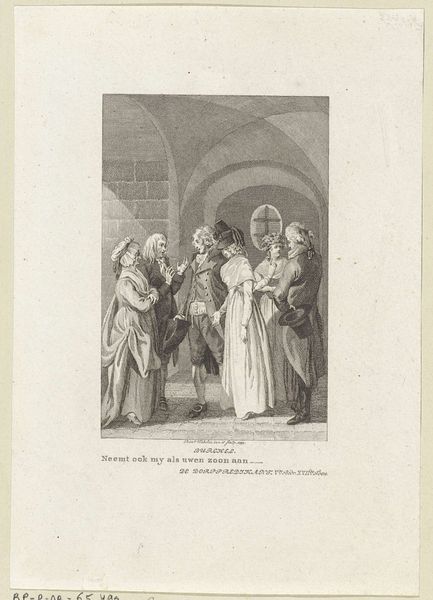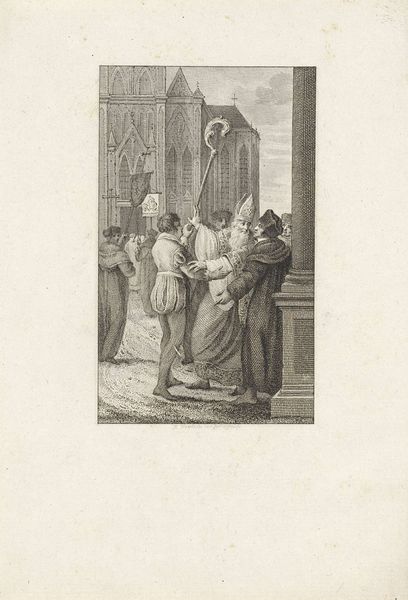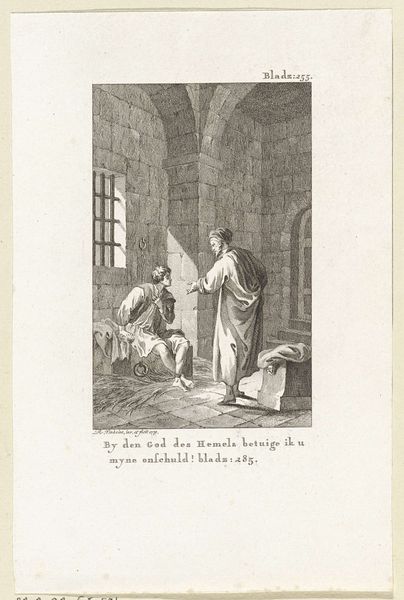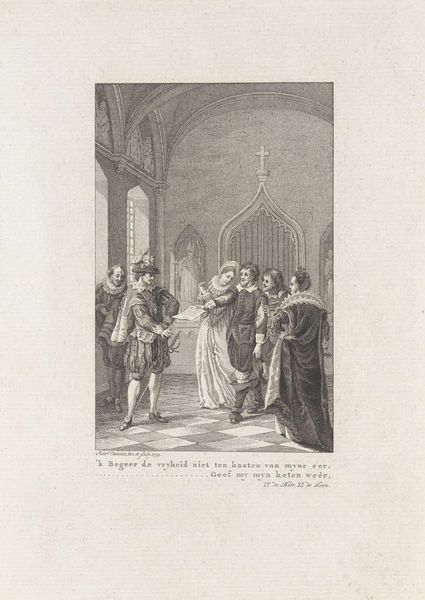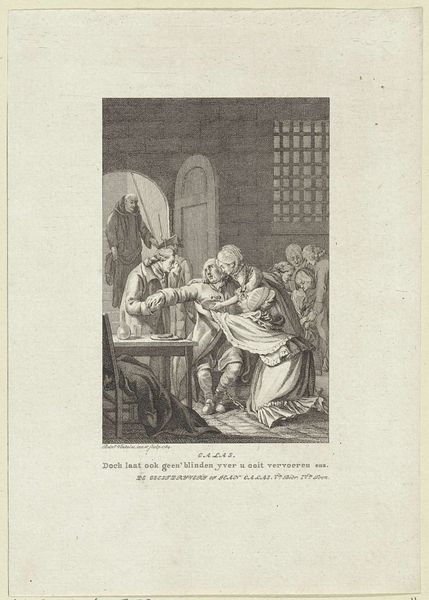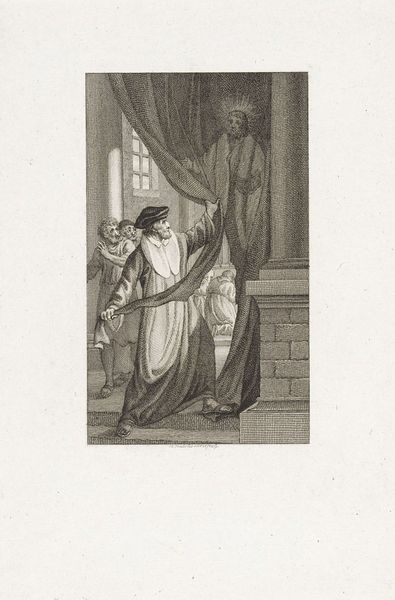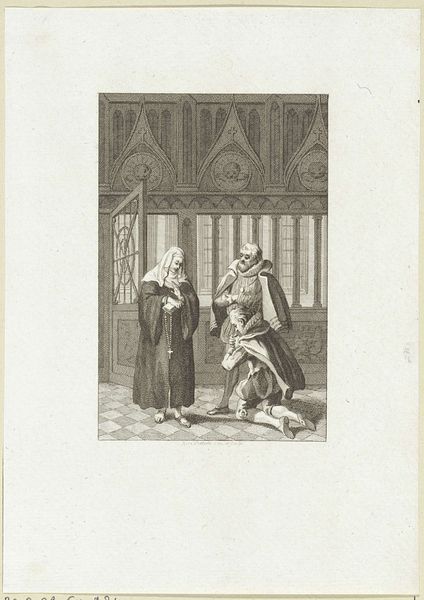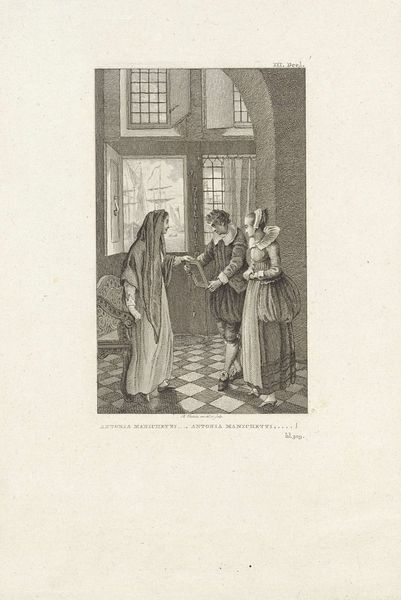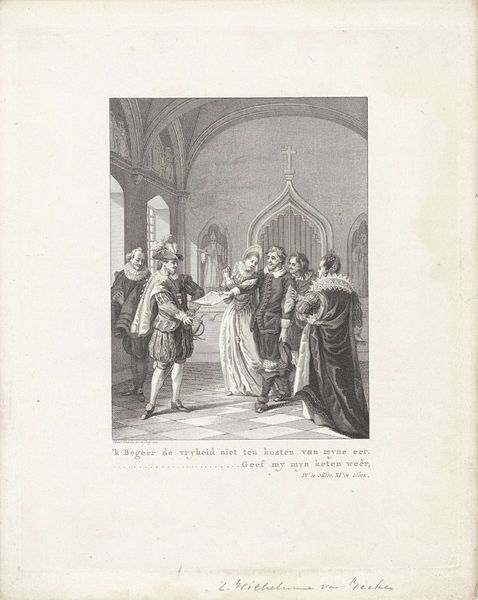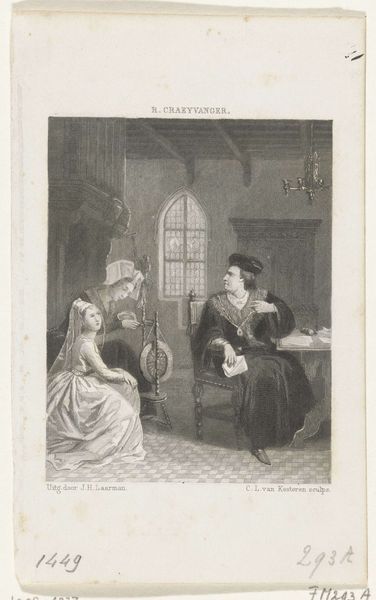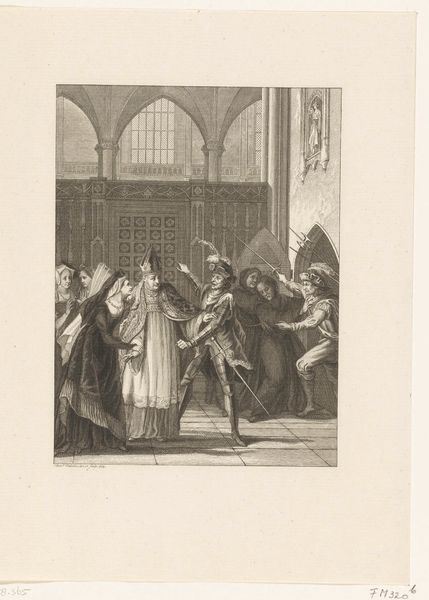
Dimensions: height 235 mm, width 152 mm
Copyright: Rijks Museum: Open Domain
Curator: Reinier Vinkeles, around 1798, crafted this engraving. It's titled "Praying Nun Visited by Monks" and resides here at the Rijksmuseum. Editor: It feels, right away, intensely private, but disrupted. The architecture seems to press in on her, like a weight, and the fine detail highlights this sense of claustrophobia even more. Curator: It's intriguing you mention the sense of claustrophobia, because this is intended to depict a moment of divine intrusion, when worldly affairs burst into a secluded life. I'm thinking, does the nun's enclosure function as an expression of our subconscious desire for inner peace being challenged by exterior forces? Editor: Quite possibly. The light feels significant too, filtered and uneven. See how it plays across the stone, but hardly touches the kneeling figure. Is she actually touched by the divine? Or is this interruption more a violation, something profane cloaked in sacred ritual? I find the heavy rosary adds a layer of symbolism. Curator: Ah, a symbol of devout practice, of course! But its size is really noticeable. Almost ostentatious. And, look at the clergyman's hand, it hovers like he is performing some official action instead of offering solace, very baroque! What could the rosary and the elevated hand suggest together? Editor: Perhaps the weight of dogma? Or that faith has become ritual, a performance rather than a lived experience. Consider the positioning of the central nun—eyes cast downward, but not truly humble, or contrite; instead, is there perhaps an air of mild defiance? What cultural narrative is Vinkeles pointing towards? Curator: A rebellion? Yes! The etching could certainly propose a subtle defiance. It reflects the time it was produced in; late eighteenth century Europe in an intellectual climate in turmoil during and after the French Revolution. We sense the religious institutions possibly faltering at the center of power... it's like a whisper of skepticism aimed at structures that seemed so unbreakable. Editor: Absolutely, it's more than a simple genre painting. I came to understand it to display how external symbols fail to truly inspire faith. Instead the individual, though bowed in form, contains her own spark. What starts as an expected religious scene slowly twists to ask if one is free to really hold belief in such circumstance, doesn’t it? Curator: I'm completely swayed. The symbolism suggests a quiet critique, which has definitely deepened my appreciation of Vinkeles' artistic, historical and symbolic commentary. Editor: Indeed. It feels right that way when an artwork speaks with such subtlety that keeps prompting fresh, meaningful dialogues for many eras ahead.
Comments
No comments
Be the first to comment and join the conversation on the ultimate creative platform.
